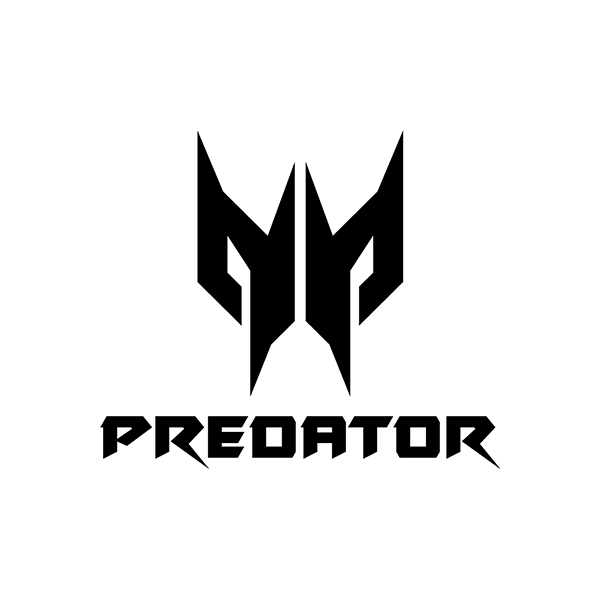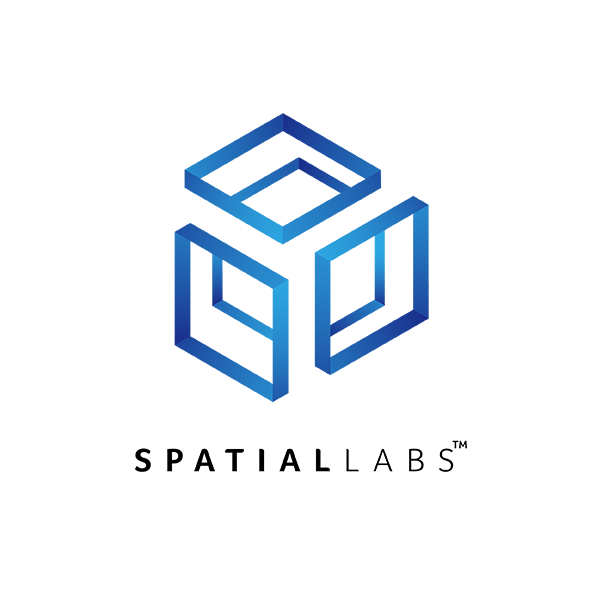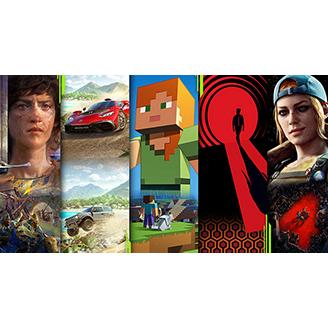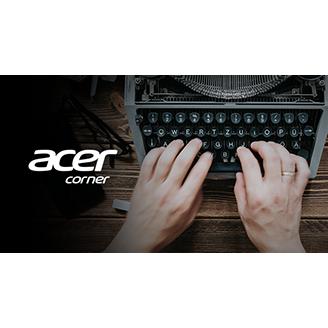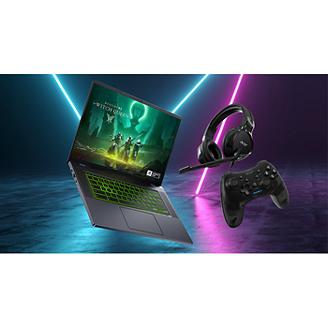-
Disable These Built in Windows 11 Functions to Improve Security and Performance
Disabling certain built-in Windows features can improve your security, reduce data collection, and boost overall system performance. Windows 11 includes many background functions that personalise your experience, track activity, and index content, often using more resources than necessary. By turning off the features you do not need, you can keep your device faster, quieter, and more private. This guide explains which settings to review and how each change helps you get more control over your PC.
1. How to reduce Windows 11 telemetry
Windows 11 does not allow you to completely disable telemetry, but you can limit it significantly by adjusting the Diagnostics & feedback settings.
In Settings → Privacy & security → Diagnostics & feedback, turn off the following:
* Under Diagnostic data: Turn Send optional diagnostic data Off to stop Windows from sending extra information such as app usage and enhanced error reports.
* Under Improve inking and typing: Turn Send optional inking and typing diagnostic data Off, which prevents Windows from collecting details about how you type or use a stylus.
* Under View diagnostic data: Turn Diagnostic Data Viewer Off so Windows does not store diagnostic logs locally (this feature can use up to 1GB of storage).
* Delete diagnostic data: Click Delete to remove any diagnostic information your device has already collected.
* Feedback frequency: Set Windows should ask for my feedback to Never so Windows stops prompting you and sending extra contextual data along with those requests.
These settings will help minimize Microsoft’s data collection and reduce background telemetry on your device.
Once you’ve limited the diagnostic data Windows collects, you can take things a step further by turning off the advertising and recommendation features that also rely on your personal usage data.
Disable advertising ID, personalized tips, and product recommendations
* In Settings, go to Privacy & security → Recommendations & offers.
* Turn Off:* Personalized offers
* Allow websites to access my language list
* Improve Start and search results
* Show notification in Settings (required notifications will be shown even if this setting is off)
* Recommendations and offers in Settings
* Advertising ID
Disabling these features helps reduce data collection, prevents personalized tracking, and minimizes distractions from unwanted notifications or suggestions. It’s a quick way to enhance your privacy and streamline your Windows experience.
2. Turn off auto-connect for Wi-Fi networks
Windows 11 will automatically reconnect to Wi-Fi networks you’ve used before, even if they are slow, insecure, or not the one you prefer. Turning off auto-connect helps prevent your device from joining unwanted networks and reduces background data activity.
To disable auto-connect for a specific Wi-Fi network:
* Click the Wi-Fi icon on the taskbar.
* Click the arrow next to your Wi-Fi name to open the full list of available networks.
* Find the network you are currently using and click Properties.
* Turn Connect automatically when in range Off.
This stops Windows from reconnecting to the network without your approval.
To remove auto-connect networks you no longer use:
* In Settings, go to Network & internet → Wi-Fi.
* Click Manage known networks.
* Choose the network you don’t want to auto-join.
* Turn Connect automatically Off, or click Forget to completely remove it.
This prevents Windows from silently reconnecting to old cafés, airports, hotels, or public hotspots.
3. Turn off Network Discovery
Network Discovery allows your computer to be visible to other devices on the same Wi-Fi network. While this is useful at home for printers or file sharing, it is unnecessary on most networks and increases how much information your device broadcasts. Turning it off helps reduce background network chatter and prevents your PC from being discoverable on public or shared Wi-Fi.
To turn off Network Discovery:
* Open Settings by pressing Windows key + I.
* Go to Network & internet → Advanced network settings.
* Under More settings, click Advanced sharing settings.
* Expand Private networks and turn Network discovery Off. This hides your device from other users on your home network unless you specifically need sharing features.
* Expand Public networks and make sure Network discovery is also Off.
This is the most important one — it prevents your laptop from being visible in places like cafés, hotels, airports, and coworking spaces.
Disabling Network Discovery limits how much your computer announces itself to others and reduces unnecessary network traffic. It’s a simple way to improve privacy and lower your exposure on shared or public Wi-Fi.
4. Turn off Location access
Windows uses your device’s location for apps, advertising, recommendations, and system features like Weather or Find My Device. If you don’t need these services, turning off Location reduces background data sharing and keeps your movements more private.
To turn off Location in Windows 11:
* Open Settings with Windows key + I.
* Go to Privacy & security → Location.
* Turn Location services Off. This stops Windows and most apps from accessing your device’s location. Turning this Off will also turn off Let apps access your location.
* If you decide to keep Location services On. Under Let apps access your location, you can pick and choose to turn Off apps that you don’t want tracking you. This ensures individual apps can’t request or use your location in the background.
* Under Default location, click Set default and choose None (or leave it unset). This prevents Windows from guessing a fallback location.
Turning off Location prevents Windows and apps from tracking where you are or when you move between places. It’s one of the most effective ways to reduce background data collection and improve your overall privacy.
5. Disable Windows Search (optional)
Windows Search constantly indexes your files in the background to make search results appear faster. This feature can be helpful, but it also creates steady disk activity, sends some usage data to Microsoft, and increases overall background processes. Turning it off can reduce telemetry, lower CPU usage, and improve privacy, especially if you do not rely on the search bar often.
To turn off Windows Search indexing:
* Press Windows key + I to open Settings.
* Go to Privacy and security → Search.
* Under Find my files, choose Classic instead of Enhanced. This limits indexing to a few basic folders and stops Windows from scanning your entire PC.
* Scroll down to Exclude folders from enhanced search. Click Add an excluded folder and add any folders you do not want Windows to index.
The more you exclude, the less background indexing occurs.
* To completely disable indexing:* Press Windows key + R, type services.msc, and press Enter.
* Scroll down and find Windows Search.
* Double-click it, set Startup type to Disabled, then click Stop.
This turns off the indexing service and prevents it from starting in the future.
Disabling Windows Search reduces how much your system scans, indexes, and reports usage patterns in the background. If you rarely use Windows Search, this adjustment can noticeably lower background activity and help limit telemetry.
6. Turn off Windows Recall (only available on Copilot+ PCs)
Windows Recall is not available on most Windows 11 devices. It only runs on specific hardware called Copilot+ PCs, which include a powerful neural processing unit and meet strict system requirements. If your device is not a Copilot+ PC, Recall will not appear in your settings and you can skip this section.
If you do have a Copilot+ PC and choose to opt in, Recall takes regular screenshots of your activity and stores them locally on your device. Turning it off prevents new snapshots from being saved and removes any existing ones.
Recall is only available if your computer meets all of these requirements:
* You must be using a Copilot+ PC
* The device must meet the Secured-core standard
* A 40 TOPS NPU
* 16 GB RAM or more
* 8 logical processors
* 256 GB storage (with at least 50 GB free to enable snapshots)
* Windows Hello Enhanced Sign-in Security enabled
* Device Encryption or BitLocker turned on
If any of these are missing, Recall will not appear.
How to turn off Windows Recall
If Recall is enabled on your device, you can turn it off in Settings.
* Press Windows key + I to open Settings.
* Go to Privacy and security → Recall and snapshots.
* Turn Save snapshots Off.
This stops Windows from taking new screenshots of your activity.
* Scroll down to Delete snapshots.
* Select Delete all to remove everything that has already been captured.
* If Recall appears on your taskbar, turn Open Recall Off in taskbar settings to hide the shortcut.
How to completely remove Recall (only on Copilot+ PCs)
If you prefer to disable the feature entirely:
* In the taskbar search box, type Turn Windows features on or off.
* Open the Windows Features window.
* Uncheck Recall.
* Restart your PC.
Any saved snapshots will be deleted automatically.
Turning off Recall prevents Windows from capturing your screen activity, reduces background processing, and ensures no snapshots are stored on your device. This is a strong privacy improvement if you use a Copilot+ PC.
Conclusion
Disabling the built-in Windows features covered in this guide is a simple way to improve both your security and your system’s performance. By reducing unnecessary data collection, limiting background activity, and turning off features you do not actually need, your PC becomes faster, quieter, and more private. These adjustments do not break core Windows functions. Instead, they help you run a cleaner setup that protects your information and keeps your device focused on the tasks that matter most.
Recommended Products
Acer Swift Edge 14 AI
Buy Now
Acer Aspire 16 AI
Buy Now
Acer Swift Go 14 AI
Buy Now
-
Acer Swift Air 16: Acer's Latest Ultra Lightweight Laptop
Here we are introducing Acer’s latest lightweight laptop, the Acer Swift Air 16, and its features and specifications. Weighing under 1 kg (2.20 lbs), this laptop may be ultralight, but it can still pack a performance punch. Its premium magnesium-aluminum alloy body delivers consistent durability and strength for daily use, while the AMD Ryzen™ AI 7 350 processor and NPU handle complex tasks with ease. Users will benefit from a more responsive device, longer battery life, and a whole range of AI-powered features to boost productivity and creativity.
Features
The Acer Swift Air 16 is packed full of nifty features to make your life easier. It is a Copilot+ PC, which are known for being the fastest and smartest Windows PCs on the market. Let’s take a look at some of the Acer Swift Air 16’s features in more detail.
Copilot
Microsoft Copilot is a conversational AI assistant that streamlines workflows and enhances productivity by automating monotonous tasks and analyzing data. It makes intelligent suggestions to help users finish tasks quickly and boosts efficiency for content creation, data analysis, and communication. Copilot is also useful for creating documents, tracking tasks and schedules, and summarizing lengthy emails, so users can free up time to focus on other, more pressing tasks.
Cocreator turns ideas into art
Have you ever had a brilliant design in mind but not been able to put pen to paper? Cocreator can help! With Cocreator, everybody has the chance to be an artist by simply describing or drawing an image with text or image prompts. Cocreator will then generate an image based on those prompts in Microsoft Paint. To try it yourself, follow these instructions:
* Open Microsoft Paint
* Select the Cocreator icon on the tool bar
* Enter a prompt in the box (be as descriptive as you can for best results)
* Start drawing on the canvas with your mouse or stylus
* An AI-generated artpiece will appear in the side bar based on your prompt and sketch
* Click the generated image to apply it to the Paint canvas to continue editing or save
Subtitles in real-time
Keep up to speed with meetings and conversations with real-time subtitles during video calls or movies. Live Captions can translate subtitles from over 40 languages into English in real time, which is great during global meetings.
Enhanced video call quality
Windows Studio Effects instantly enhances lighting conditions, blurs the background, and removes noise and distractions for higher quality video calls without shelling out for expensive lenses or additional lights. It also allows automatic framing to keep you front and center during calls, and adjusts your gaze to simulate eye contact to make online conversations more engaging.
Crystal-clear display
The AMOLED display delivers stunning visuals, true-to-life blacks and beautifully vibrant colors that bring images to life. Each pixel lights up individually, ensuring enhanced vibrance, along with fast refresh rates and a widescreen display resolution.
Specifications
* Operating System: Windows 11 Home
* Processor Type: AMD Ryzen™ AI 7 350 processor
* RAM: 32 GB of DDR5
* NPU AI performance: 50 TOPS
* Display Screen Technology: AMOLED 3 K / WUXGA up to 120Hz / IPS display up to 60Hz
* Ports: 2 x USB-C, 1 x USB-A, HDMI, 1 x headphone jack
* Thickness: 16.6 mm (0.64 inches)
* Weight: < 1 kg (2.20 lbs)
Acer Swift Air 16: the verdict
The Acer Swift range offers some of the best lightweight laptops around. Weighing less than 1 kg, the Acer Swift Air 16 is ultralight but packed full of handy features to optimize your workflow, including AI capabilities with Copilot+. It is impressively fast and has 32 GB RAM for multitasking, running applications, and handling data. The Acer Swift Air 16 is not yet available for purchase in the United States, but check the Acer store soon for a release date, and don’t forget to grab your 15% student discount for extra savings.
Recommended Products
Acer Swift Edge 14 AI
Buy Now
Acer Aspire 16 AI
Buy Now
Acer Swift Go 14 AI
Buy Now
-
Why GPU Prices Are Expected to Rise in 2026
Disappearing memory supply, soaring RAM costs, and Nvidia’s reported shift in how it handles VRAM are all pointing toward higher GPU prices in the coming year. For the first time in a long while, many graphics cards are finally selling at or even below MSRP, but that window may be closing much sooner than gamers expect. Memory manufacturers are redirecting production toward higher-margin AI and data center clients, leaving fewer GDDR6 and GDDR7 chips available for consumer GPUs.
Recent industry reporting also suggests Nvidia may reduce discrete gaming GPU production by as much as 30 to 40 percent in early 2026 due to VRAM constraints, reinforcing concerns that today’s relatively affordable pricing environment will not last.
What’s happening to the GPU market right now
For most of 2025, the GPU market finally appeared to normalize. Prices stabilized, cards were widely available, and some models dipped below MSRP for the first time since before the pandemic. On the surface, it looked like the long period of volatility had ended.
Underneath that stability, however, the supply chain was already tightening. DRAM prices began climbing sharply, inventories of GDDR6 and GDDR7 started to thin, and memory fabs shifted more capacity toward AI-focused products. That pressure is now starting to surface. AMD partners have reportedly warned retailers about upcoming price increases, and Nvidia’s next-generation launches are rumored to face delays tied not to GPU manufacturing capacity, but to memory availability.
The apparent health of today’s market may also be misleading. After the initial Blackwell launch, Nvidia and its partners ramped up production, which helped refill retail shelves. More recent chatter suggests that production is now being deliberately pulled back in anticipation of continued VRAM shortages. In other words, current availability reflects earlier output decisions, not a resolution of the underlying memory constraint.
Ram prices are exploding, and GPUs depend on the same supply
The first major warning sign appeared in the RAM market. Throughout 2025, DDR5 prices surged at a pace that caught nearly everyone off guard. Kits that cost around $90 in late summer suddenly climbed to $240 or more, with premium or high-capacity kits shooting even higher. Some configurations have seen year-over-year increases of more than 170 percent.
This spike isn’t limited to desktop memory. GPUs rely on specialized versions like GDDR6 and GDDR7, which come from the same handful of manufacturers. When DRAM prices spike, VRAM costs rise alongside it. The difference now is that memory fabs are prioritizing the most profitable customers, which are AI and data-center clients. That leaves far fewer chips available for consumer graphics cards, and it creates a situation where GPU makers must either absorb the cost or pass it on. Most will choose the latter.
AI data centers are consuming global memory production
The single biggest force behind the memory crunch is AI. Over the past few years, hyperscale companies such as Nvidia, Microsoft, Amazon, Google, and Meta have dramatically increased their demand for high-performance memory. They are buying enormous quantities of:
* HBM (High Bandwidth Memory)
* Server-grade DRAM
* GDDR6 and GDDR7
* Complete production runs from major fabs
AI accelerators require far more memory per device than consumer GPUs, and they generate significantly higher profit margins. As a result, memory manufacturers are redirecting capacity away from gaming hardware and toward data centers.
This shift means consumer GPUs are no longer the priority. When memory is limited, enterprise buyers get first access, and gaming cards receive whatever supply remains. It is a similar situation to the crypto-mining era, except this time the demand is much larger, more sustained, and driven by enormous corporate budgets that can outbid the consumer market every time.
Nvidia may stop bundling VRAM with its GPUs, making the shortage even worse
A new industry rumor suggests that Nvidia has stopped supplying VRAM alongside its GPU and is instead forcing board partners to source memory on their own. AMD has not officially taken a similar stance, but chances are it may follow a similar lead. Normally, Nvidia sells partners a finished package that includes both the GPU die and the required VRAM modules. If this rumor is accurate, Nvidia is now shipping only the GPU itself while leaving partners responsible for finding GDDR6 or GDDR7 on the open market.
This change would have significant consequences. Large manufacturers like Acer may be able to secure their own memory supply, but smaller partners would struggle to compete with AI companies that are already buying most available inventory. If board partners have to acquire VRAM independently, they will pay higher prices, face more volatility, and deal with longer production timelines. Those added costs almost always get passed on to consumers.
The bigger concern is that some smaller vendors might not survive the shift. Companies with limited purchasing power cannot compete with massive data-center buyers for scarce memory, which could reduce competition in the GPU market and ultimately drive prices higher. Even though this information is still unconfirmed, it aligns with the broader memory shortage and makes a future GPU price spike even more likely.
Nvidia is reportedly cutting gaming GPU production in 2026
New industry reports suggest that Nvidia is preparing to reduce discrete gaming GPU production by as much as 30 to 40 percent in the first half of 2026, primarily due to ongoing VRAM supply constraints. The move is not a response to falling demand. Instead, it reflects the growing difficulty of securing sufficient GDDR6 and GDDR7 memory as manufacturers prioritize higher-margin AI and data center clients.
A production cut of this scale has direct implications for GPU pricing. When significantly fewer graphics cards are produced, supply tightens across retail and OEM channels even if demand remains steady. This reduces price competition, limits discounts, and pushes average selling prices higher, particularly in the midrange segment where volumes matter most.
These cuts are also unlikely to be evenly distributed. Lower-margin models and higher-VRAM configurations tend to be affected first, as they consume more memory while delivering less profit per unit. That makes popular 16 GB variants especially vulnerable to reduced availability or early price increases.
In practical terms, cutting GPU output while memory costs are already rising creates a compounding effect. Fewer cards reach the market, each one costs more to build, and manufacturers focus on protecting margins rather than volume. The result is a market that looks stable on the surface but becomes progressively more expensive for consumers.
GPU launches may be delayed due to memory shortages
The upcoming generation of graphics cards is already being affected by the global memory squeeze. Nvidia was originally expected to refresh its lineup with RTX 50-series Super models sometime in early 2026, but recent industry chatter suggests those launches may slip toward late 2026. The main issue is not manufacturing capacity for the GPUs themselves. The real bottleneck is GDDR7 availability.
Next-generation cards require newer, higher-density GDDR7 modules that are being produced in very limited quantities. Most of those modules are being reserved for enterprise hardware and AI accelerators, which leaves little supply for consumer products. AMD’s RDNA 4 lineup is caught in the same situation, since it still relies on GDDR6 and those inventories are being squeezed as well.
When memory becomes hard to source, GPU makers slow down production and wait for supply to improve. This leads to fewer cards on shelves, delayed product launches, and higher prices for the units that do reach retailers. Even if Nvidia or AMD wants to launch new cards sooner, they cannot do so without the VRAM to build them at scale.
Consoles and handhelds may also see supply issues and higher prices
The memory shortage is not limited to PC graphics cards. Any device that relies on DRAM or VRAM is vulnerable, which includes modern consoles and handheld gaming systems. Xbox has already experienced price increases and inventory instability in several regions, and analysts expect the situation to worsen if memory supply tightens further. Microsoft appears to have been caught off guard, which is why Series X units now fluctuate significantly in price.
Sony, on the other hand, seems to have secured additional supply ahead of time, which explains why PlayStation prices have remained relatively stable despite the broader market pressure. Even newer hardware like upcoming Steam Machine-style devices or handheld PCs could be affected, since they all require the same memory types that are currently in short supply.
If DRAM and VRAM remain expensive and difficult to source, console manufacturers may raise prices, reduce production, or quietly shift to smaller production runs. All of this contributes to the broader upward pressure on hardware costs heading into next year.
Why GPU prices will rise next year
All signs point to higher GPU prices as the industry moves into 2026, and the reasons extend beyond rising memory costs alone. Memory prices are climbing rapidly, with both GDDR6 and GDDR7 becoming harder to source as AI and data center operators absorb a growing share of global supply. At the same time, Nvidia’s reported shift away from bundling VRAM places more cost and risk on board partners, increasing volatility across the consumer GPU market.
More importantly, planned reductions in gaming GPU production are likely to accelerate price increases directly. Cutting output by as much as 30 to 40 percent means fewer graphics cards will reach retailers while demand from gamers, system builders, and OEMs remains relatively stable. When supply contracts this sharply, price competition weakens, discounts disappear, and average selling prices rise even if demand does not increase.
These production cuts also reshape which cards remain available. Manufacturers tend to protect higher-margin models first, leaving midrange and “best value” GPUs more exposed to shortages. As a result, the cards most consumers target for price-to-performance are often the first to sell out or see price creep, even before flagship models are affected.
Taken together, rising VRAM costs, AI-driven memory allocation, changes in VRAM sourcing, and deliberate reductions in GPU output create an environment where graphics cards become more expensive to build, harder to manufacture at scale, and increasingly resistant to price cuts. Even without a sudden demand spike, these conditions strongly favor higher GPU prices throughout 2026.
Final thoughts
For a brief moment, it looked like the GPU market had finally returned to normal. Prices stabilized, stock levels improved, and many cards were selling near or below MSRP. That window appears to be closing. The memory shortage, driven by the rapid expansion of AI and the shift in manufacturing priorities, is already shaping next year’s hardware landscape. If conditions stay the same, consumers should expect higher prices, slower launches, and tighter availability throughout 2026.
If you are planning to upgrade, the holiday season is one of the best times to do it. Acer’s Predator and Nitro gaming laptops and desktops often include powerful GPUs at competitive prices, and many models see significant discounts during year-end sales. Students can also take advantage of Acer’s education program, which offers up to 15 percent off select devices from the Acer Store. With a potential GPU shortage approaching, buying now at a reduced price may be the most cost-effective way to secure a high-performance system before hardware costs rise again.
Recommended Products
Predator Helios 18 AI (RTX 5090)
Buy Now
Acer Nitro 60 (RTX 5070Ti)
Buy Now
Predator BiFrost AMD Radeon RX7600 OC Graphics Card
Buy Now
-
5 Best Acer Laptops to Gift Your Loved Ones This Christmas
Christmas is coming, and we have compiled a list of the best Acer laptops to gift your loved ones this festive season. From gamers to students and everyone in between, the Acer store has a wide range of laptops, Chromebooks, and accessories. Let’s dive in and take a look at our top 5 laptop picks.
1. Acer Swift Edge 14 AI Laptop - SFE14-51T-75PZ
This lightweight laptop with built-in AI features is perfect for working and creating without limits. The Acer Swift Edge 14 AI laptop offers an outstanding 21 hours of battery life and ultra-fast performance, so users can multitask with ease. This laptop would be perfect for hybrid workers who can run the AI assistance in the background for mundane tasks, or creatives who need fast performance and precision. This stunning Acer laptop is also made with post-consumer plastics and is created with the environment in mind. Get yours from the Acer store today or check out our other lightweight laptops for the ideal Christmas gift.
* Operating System: Windows 11 Home
* Processor Type: Intel® Core™ Ultra 7
* Processor Speed: 2.20 GHz (4.80 GHz turbo)
* Processor Core: Octa-core (8 Core™)
* Standard Memory: 32 GB
* SSD Capacity: 1 TB
* Display Screen Technology: OLED
* Screen mode: WQXGA+
* Screen Resolution: 2880 x 1800
* Speakers: 2
* Bluetooth: 5.4 or above
* Ports: HDMI, USB x 4, Audio line in / out
* Height: 0.37 inches (0.93 cm)
* Width: 12.35 inches (31.36 cm)
* Depth: 9.03 inches (22.93 cm)
* Weight: 2.18 lb (0.98 kg)
2. Predator Triton 14 AI - PT14-52T-972D
The Acer Predator Triton 14 AI blends portability, creativity, and performance to deliver a unique gaming experience. With high-quality visuals and RTX 5070 graphics, this AI-powered laptop makes an excellent Christmas gift for gamers. It also includes a stylus to unleash your creative flair, while the per-key RGB backlighting shines through the keypad for improved visibility. Treat the gamer in your life with the Predator Triton 14 AI from the Acer store this Christmas or check out our other gaming laptops.
* Operating System: Windows 11 Home
* Processor Type: Intel® Core™ Ultra 9
* Processor Speed: 3.30 GHz (5.10 GHz turbo)
* Processor Core: Octa-core (8 Core™)
* GPU: NVIDIA® GeForce RTX™ 5070
* Standard Memory: 32 GB
* SSD Capacity: 1 TB
* Display Screen Technology: OLED CineCrystal (Glare)
* Screen mode: WQXGA+
* Screen Resolution: 2880 x 1800
* Speakers: 6
* Bluetooth: 5.4 or above
* Ports: HDMI, USB x 4, Audio line in / out
* Height: 0.68 inches (1.72 cm)
* Width: 12.7 inches (32.25 cm)
* Depth: 8.7 inches (22.09 cm)
* Weight: 3.53 lb (1.60 kg)
3. Acer Chromebook Plus Spin 514 - CP514-5HN-K4ZE
If you are looking for something a little more streamlined this Christmas, then a Chromebook Plus would be a great option. These portable devices are designed for web-based browsing and creating, editing, and collaborating on Google Docs, Sheets, and Slides. It also comes with 2TB cloud storage and 12 months of Google AI Pro. The Acer Chromebook Plus Spin 514 is ideal for students who can do most of their research and writing online, and elderly parents who need a user-friendly device without the bells and whistles. Get yours from the Acer store or browse our other Chromebooks for everyday use.
* Operating System: Chrome OS
* Processor Type: Kompanio Ultra 910
* Processor Speed: 2.10 GHz
* Processor Core: Octa-core (8 Core™)
* Standard Memory: 16 GB
* SSD Capacity: 256 GBActive Matrix TFT LCD
* Screen mode: WQXGA+
* Screen Resolution: 2880 x 1800
* Speakers: 2
* Bluetooth: Yes
4. Acer Aspire 16 AI Laptop - A16-11M-X0LW
This AI-powered Copilot+ PC features a Qualcomm Snapdragon processor for enhanced speed and efficiency. It offers a long battery life that is ideal for those who use their laptop on the go, and features a large touchpad for enhanced accuracy. The Acer Aspire 16 AI laptop is packed with handy AI features to make life easier, while the 120Hz refresh rate gives it an overall smooth feel. It is a prime choice for those looking for a budget-friendly Christmas gift and a device that suits everyday use. Get yours today on the Acer store.
* Operating System: Windows 11 Home
* Processor Type: Qualcomm® Snapdragon™ X
* Processor Speed: 3 GHz
* Processor Core: Octa-core (8 Core™)
* Standard Memory: 16 GB
* SSD Capacity: 512 GB
* Display Screen Technology: ComfyView (Matte); In-plane Switching (IPS) technology
* Screen mode: WUXGA
* Screen Resolution: 1920 x 1200
* Speakers: 2
* Bluetooth: Yes
* Ports: HDMI, USB x 4, Audio line in / out
* Height: 0.63 inches (1.60 cm)
* Width: 14 inches (35.56 cm)
* Depth: 9.85 inches (25.01 cm)
* Weight: 3.42 lb (1.55 kg)
5. Acer Swift Go 14 AI Laptop - SFG14-01-X006
The Acer Swift Go 14 AI laptop is packed with AI features to boost productivity. It is both thin and light, making it ideal for those who commute or work remotely. Moreover, this impressive laptop delivers a seamless performance that makes multitasking, working, and creating a breeze. It is a top choice for influencers or business owners who need performance and flexibility. Buy yours from the Acer store today.
* Operating System: Windows 11 Home
* Processor Type: Qualcomm® Snapdragon™ X Plus
* Processor Core: Octa-core (8 Core™)
* Standard Memory: 16 GB
* SSD Capacity: 1 TB
* Display Screen Technology: ComfyView (Matte); In-plane Switching (IPS) technology
* Screen mode: WQXGA
* Screen Resolution: 2560 x 1600
* Speakers: 2
* Bluetooth: Yes
* Ports: USB x 4, Audio line in / out
* Height: 0.39 - 0.71 inches (0.99 - 1.80 cm)
* Width: 12.7 inches (32.25 cm)
* Depth: 8.9 inches (22.60 cm)
* Weight: 2.91 lb (1.31 kg)
Make your Christmas merry with Acer
Let Acer take the stress out of buying Christmas gifts with this excellent range of laptops for gamers, content creators, students, and elderly users. There’s something for everyone on the Acer store website, from the eco-conscious Acer Swift range to simple and user-friendly Acer Chromebooks. Check out our gift ideas and surprise your loved ones with a new laptop or device this Christmas, and don’t forget that students can get an added 15% student discount. Happy shopping, and wishing you a very merry Christmas from the Acer team!
Recommended Products
Acer Swift Edge 14 AI
Buy Now
Predator Triton 14 AI
Buy Now
Acer Chromebook Plus Spin 514
Buy Now
-
How NotebookLM is About to Change the Way You Learn
Learning today isn’t just about finding information - it’s about making sense of it. Whether you’re studying for a course, researching a topic, or trying to get through a stack of articles, the challenge is often organizing everything and understanding how it all fits together.
NotebookLM aims to solve that problem. Built by Google as an AI-powered research and study assistant (you can check it out directly here), it helps you work directly with your own materials such as notes, documents, transcripts, and articles into an interactive workspace where you can ask questions, generate explanations, and explore ideas more clearly. Instead of searching the web, NotebookLM focuses on what you give it, helping you build a deeper understanding of the content you’re already working with.
In this article, we’ll cover:
* What NotebookLM is and how it works
* How it differs from a general-purpose AI chatbot
* Ways it can support studying, research, and self-directed learning
* Key features that benefit students and educators
* A brief look at where NotebookLM might go next
What Is NotebookLM and How Does It Work?
NotebookLM is Google’s AI-assisted research and learning tool designed to help you work more effectively with your own materials. Unlike general AI chatbots that pull from the broader internet, NotebookLM focuses entirely on the documents, notes, and sources you upload, creating a controlled and personalized environment for studying or research - something especially appreciated by Educators, who can align content closely with their syllabus when preparing lessons.
When you create a notebook, you can add PDFs, Google Docs, transcripts, or pasted text. NotebookLM then analyzes your content and allows you to ask questions directly about your sources, generate summaries or explanations, create outlines and study guides, and identify key themes, connections, or inconsistencies. Because it stays grounded in your materials, the responses tend to be more focused and relevant to your specific content. In essence, NotebookLM functions less like a general chatbot and more like a personal research assistant, helping you interpret, organize, and build understanding from the information you’re already working with.
How NotebookLM Differs from other LLMs
Most AI chatbots are already designed to answer broad questions by pulling from a wide range of online information. NotebookLM works differently. Instead of searching the internet, it stays grounded in the specific materials you’ve added to your notebook.
Here’s what sets it apart:
* Source-anchored responses: NotebookLM only uses your uploaded documents as its knowledge base, making answers more focused, relevant, and predictable.
* Built-in document understanding: It can summarize long texts, compare sections, extract key points, or clarify concepts directly within your materials.
* Structured workspace: Rather than being just a chat window, NotebookLM organizes content into notebooks, making it easier to manage readings across different classes, research projects, and other class materials.
* Designed for deeper learning: The tool helps you generate study guides, outlines, explanations, and follow-up questions all tailored to the sources you provide.
This makes NotebookLM less of a general conversational tool and more of a purpose-built companion for learning, research, and content analysis. You can watch a quick video of exactly how it works and get started here:
https://www.youtube.com/watch?v=6dHmu1GALmA
How NotebookLM Supports Learning and Research
NotebookLM is designed to make it easier to understand complex material, organize information, and stay focused on what matters. By working directly with the content you upload, it helps streamline tasks that typically take time and mental energy.
Some of the ways it can help include:
* Summarizing long readings
* Creating structured and scalable study materials
* Clarifying concepts and terminology
* Highlighting connections across documents
These capabilities make NotebookLM not only practical but also adaptable for a wide range of learners. Teachers and educators can define the scope and level of information appropriate for different grades, ensuring that students absorb material at the right pace rather than being exposed to unlimited or off-topic content from the broader internet.
NotebookLM also supports accessible learning through features such as audio overviews, allowing students to listen to summaries or explanations of their materials - an option that can be especially helpful for learners with special needs or different learning preferences. By turning scattered notes, transcripts, and articles into a single, interactive workspace, it allows learners to focus on comprehension and insight rather than on managing information.
Always Improving: Recent New Features
If you are already familiar with NotebookLM, you should be aware that it continues to evolve with several recent improvements that make it even more capable as a personal learning assistant. These upgrades include:
* Larger context window: Now able to handle bigger readings and more complex notebooks than before.
* Smarter, more coherent reasoning: Responses are clearer and better structured.
* Better memory across chats: Retains context more effectively, making follow-up questions more meaningful.
* ‘Discover Sources’: Can now suggest helpful web references to complement your own materials.
* Expanded file support and seamless Gmail/Drive integration: Allows for more flexible uploading for Word Documents, PDFs, and working directly with Google Workspace files.
Together, these enhancements make NotebookLM not just a tool for organizing notes, but a more intelligent, responsive companion that adapts to your learning and research needs.
Where NotebookLM Might Go Next
While NotebookLM is still evolving, its direction is clear: creating a more personalized, source-grounded way to learn. As AI tools become more integrated into everyday study routines, NotebookLM has the potential to support even more formats, richer collaboration features, and deeper integrations with the apps students already use.
For many learners, this also raises the importance of having devices that can support AI-driven study tools smoothly. Acer’s range of Chromebooks, including models designed for students and classrooms such as the Acer Chromebook Plus Spin 514, offer seamless access to NotebookLM and Google Workspace. With its convertible 2-in-1 design, 14-inch WUXGA display, and all-day battery life, it’s well suited for reading, research, and AI-assisted learning workflows. College students who purchase a Chromebook Plus for themselves can also enjoy 12 months free of Google AI Pro (a nearly $240 value), making it an accessible way to explore AI-enhanced learning from day one..
NotebookLM is still new, but it’s already changing how people understand and interact with their own materials. The best way to see its potential is to try it with content you’re working on right now - whether it’s a class reading, a research topic, or notes from a project.
Featured Products
Chromebook Plus 514
Chromebook Plus 516
Chromebook Plus Spin 514
Learn More
Learn More
Learn More
-
Acer Nitro V 15: Best Budget Gaming Laptop in 2025?
Searching for the best budget gaming laptop? Well congratulations because you’ve just found the best cheap gaming laptop out there, the Acer Nitro V 15. Instead of a cheap gaming laptop, perhaps we should say best value gaming laptop, as the Acer Nitro V 15 is a compact beast that perfectly balances portability and performance.
For committed gamers who demand smooth Full HD play combined with reliable multitasking and ever-stable performance, this isn’t only a good budget gaming laptop. It’s a ticket to jump into gaming missions whenever and wherever you are.
A potent combination of Intel processing, NVIDIA graphics and a 15.6” display, there’s much to discover about the Acer Nitro V 15. So let’s jump right in and take a look at the tech specs of the Acer Nitro V 15 Gaming Laptop - ANV15-52-778V2 currently available for the wallet-friendly price of $1,049.99.
* Operating System: Windows 11 Home
* Processor: Intel® Core™ i7-13620H processor Deca-core
* Processor Speed: 2.40 GHz
* Processor Speed (turbo): 4.90 GHz
* GPU: NVIDIA® GeForce RTX™ 5050 with 8 GB dedicated memory
* Display: 15.6" Full HD (1920 x 1080) 16:9 IPS 165 Hz
* Display Screen Type: Active Matrix TFT LCD
* Display Screen Technology: ComfyView (Matte); In-plane Switching (IPS) Technology
* Memory: 16 GB DDR4 SDRAM
* Memory Slots: 2
* Storage: 512 GB
* Bluetooth: Bluetooth 5.1 or above
* Interfaces/Ports: HDMI, USB x 4, Audio in/out
* Battery Type: 76 Wh
* Maximum Battery Run Time: 8 hours
* Dimensions: 14.3” x 9.4” x 0.92”
* Weight: 4.66 lb
Power and portability
As you can see from these ever-tasty tech-specs, this is truly a prince among budget gaming laptops. Let’s begin with the brains of the beast and see what makes the Acer Nitro V 15 the perfect blend of power and portability. The Intel® Core™ i7-13620H processor is a deca-core processor with 6 performance cores and 4 efficiency cores, topped with a maximum turbo boost of up to 4.9 GHz. Here you have a CPU tailored to balance gaming excess with everyday tasks and productivity. Keep up with whatever you need to get done, from fast-paced gaming, to intense multitasking, and everything in between.
Graphically genius
Still wondering what is the best gaming laptop for you? Well the Acer Nitro V 15’s NVIDIA® GeForce RTX™ 5050 Laptop GPU with dedicated GDDR6 memory may help to sway your opinion about this device! This GPU is ready to drive modern gaming experiences at Full HD resolution, and with dedicated video memory, 8GB of VRAM handles visual workloads without leaning heavily on system RAM. Tied in with the CPU, this graphics card delivers finely tuned graphic excellence across all game genres from FPS to open world exploration.
Full HD Display
A portable full HD display is something to be proud of, and the Acer Nitro V 15’s 5.6-inch Full HD 1920×1080 display is a vision to behold. Fast and speedy play is the name of the game, and this display delivers refresh rates up to 180 Hz and response times up to 3 ms, depending on configuration. Paired with the GPU, the full HD resolution makes whatever you’re playing look fantastic. And from all angles, thanks to IPS technology and Acer’s matte ComfyView surface. Color-wise the Acer Nitro V 15 has got you covered with up to 100% sRGB color. Creators and gamers alike can benefit from the rich color accuracy this laptop delivers.
Memory and storage
All this color and speed mean nothing without solid memory and storage capacity. Well fret not, for the Acer Nitro V 15 has both, in droves. 16 GB of DDR4 memory in a dual-slot configuration provides ample memory as well as flexibility for future upgrades. For all your files and more, 512 GB PCIe NVMe 4.0 SSD means fast game loading, really rapid boot times, and solid responsiveness whatever you’re doing.
Connect with clarity
Connectivity is a must in all devices, and the Acer Nitro V 15 doesn’t disappoint. As you’d expect, this laptop has HDMI®, four USB ports, and an Ethernet port, as well as audio line-in and line-out. Headsets, peripherals, and external displays (if needed) can all be plugged while you play, without any friction.
For occasions where reliability is critical, Gigabit Ethernet lets you get wired in, while everyday connectivity is covered by the Wi-Fi 6 (IEEE 802.11 a/b/g/n/ac/ax) and Bluetooth 5.1 or above. Built-in webcam and mic ensure smooth communications, while Acer’s suite of AI-powered tools including Acer PurifiedVoice™ and PurifiedView™ massively improve call quality.
Professionally portable
Where many budget laptops fall in the trenches, the Acer Nitro V 15 shines. The 76 Wh lithium-ion battery has a maximum runtime of up to 8 hours. That’s a full workday of Nitro V 15 power at your fingertips wherever you venture. The 135 W power adapter delivers fast charging when you need it, but on-the-go gaming, browsing, study, or work is the forte of the Acer Nitro V 15 budget gaming laptop.
In true Nitro style, the V 15 is black and discreet, able to seamlessly blend in a gaming den or professional environment. Weighing a mere 4.66 lbs and with a height of 0.93 inches, a width of 14.3 inches, a depth of 9.4 inches you can carry this laptop to work, school, or gaming meet-ups without ever feeling weighed down!
Best budget choice?
We hope you’ve enjoyed today’s exploration of the Acer Nitro V 15 gaming laptop. A practical, fun choice for gamers who require a balance of power and portability, the Acer Nitro V 15 stands out from the crowd. The Intel Core i7-13620H processor and RTX 5050 GPU provide serious capability for on-the-go Full HD gaming. 15.6” Full HD IPS display, PCIe 4.0 storage, and modern wireless support round out a machine designed for smooth, reliable everyday use. If you’re looking for an affordable gaming laptop with perfected performance, the Acer Nitro V 15 shows that portable hardware can still deliver raw power and versatility. Finally, remember to visit the Acer Store to explore other devices, where students can enjoy 15% off.
Recommended Products
Acer Nitro V 15 (RTX 5050)
Buy Now
Acer Nitro V 16 (RTX 5060)
Buy Now
Acer Nitro V 16S (RTX 5070)
Buy Now

